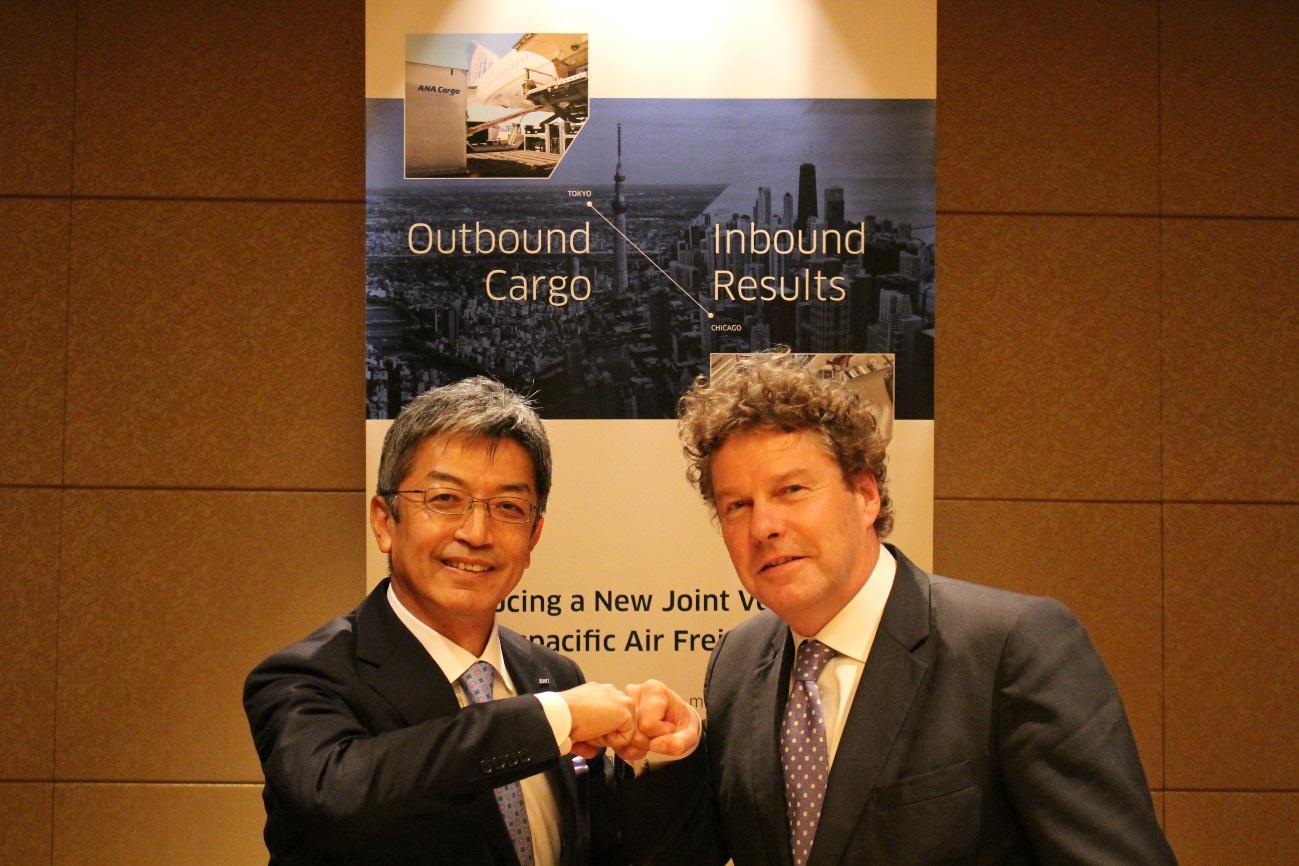All Nippon Airways and United Airlines have launched their joint venture on trans-Pacific cargo.
The first phase of the partnership, according to ANA Cargo, covers joint sales and aligned operations for shipments originating from Japan destined for Canada and the US. The two carriers are planning to subsequently extend that to cover Japan-bound cargo, and eventually to the rest of Asia and the Americas.
The agreement to establish the joint venture was signed in March 2016.

Toshiaki Toyama, president of ANA Cargo [left in photo], says that there were two major factors behind the decision to partner with United Cargo.
“The main reason is the customer benefit of the joint network and capacity coverage, with overlapping destinations where there is steady demand and also new destinations to which customers did not previously have access,” he says. “Also, the passenger units have been in partnership since April 2011 and have established a trusting relationship. It was already obvious that the two companies work well together in terms of the culture and ethics of the employees.”
Toyama says that the main difficulty, especially during the early stages, will be customer acceptance and awareness.
“Although the concept of a JV is familiar to our Japanese customers, this trans-Pacific joint venture is new,” he says. “It will also be new to customers in the US and Canada when we expand. We are now a single virtual company for the applicable areas. The challenge lies in customers’ understanding of this new concept at first, but it is up to us to make it simple. One-stop shopping is the idea. Once they experience it, they will see the full benefits.”
Apart from the customer aspect, there are other more behind-the-scenes issues that the two airlines will have to address.
“The major challenges of the UA-ANA joint venture are advancing the interface between our two technology systems and expanding the co-location of our cargo facilities,” says Jan Krems, president of United Cargo [right in photo]. “We’re confident we can achieve these goals because we’ve met similar challenges together in launching Phase 1 of the JV, and our teams work well together and trust each other.”
The joint venture with United Cargo resembles what ANA Cargo has been doing with Lufthansa Cargo. Initially establishing a JV for cargo from Japan to Europe, the carriers have since expanded it to cover cargo going in both directions.
At the same time, United Cargo and Lufthansa Cargo are ramping up their cooperation between the US and Europe, with the aim of eventually setting up another JV covering the trans-Atlantic market.
While ANA, United and Lufthansa are all members of Star Alliance, bilateral partnerships are even being formed across the traditional alliance structures. In May 2016, Lufthansa Cargo also entered into a joint business agreement with Cathay Pacific Cargo on Hong Kong-Europe routes, with the first westbound shipments to be transported in early 2017.
“Yes, there is a growing trend for these types of partnerships, because cargo joint ventures have the potential to deliver customer benefits beyond what BSAs and interlining can provide,” says Krems. “However, it takes a considerable investment of a company’s time and resources to plan and execute a cargo joint venture. So there are a limited number of markets and partners where it makes sense to pursue a JV.”
From ANA’s point of view, the United JV makes sense, even amid so many economic uncertainties around the world.
“The current market is tough – that’s a known fact,” says Toyama. “On the bright side, the forecasts do not show such a decline in the tonnage. I see a great opportunity here. It is times like these that we need to start something new, such as the JV, to provide added value to our customers.”
In particular, Toyama highlights the automotive sector as one which is still performing strongly, with a large demand for air cargo.
“We want to pay close attention to Japan’s Industrial Production Index which is showing an increase,” he says. “We see a lot of potential here for the Japanese export scene.”
Krems says that he is very optimistic about the long-term benefits of the JV, not just for United and ANA but for their customers as well.
“The global economy rises and falls unpredictably, as do the economies of individual countries,” he says. “Our investment in the JV and in our partnership with ANA is not something we did for the short term. Whatever the state of world trade, we believe the JV will deliver an improved customer experience on an expanded network.”
By Jeffrey Lee
Asia Cargo News | Hong Kong



